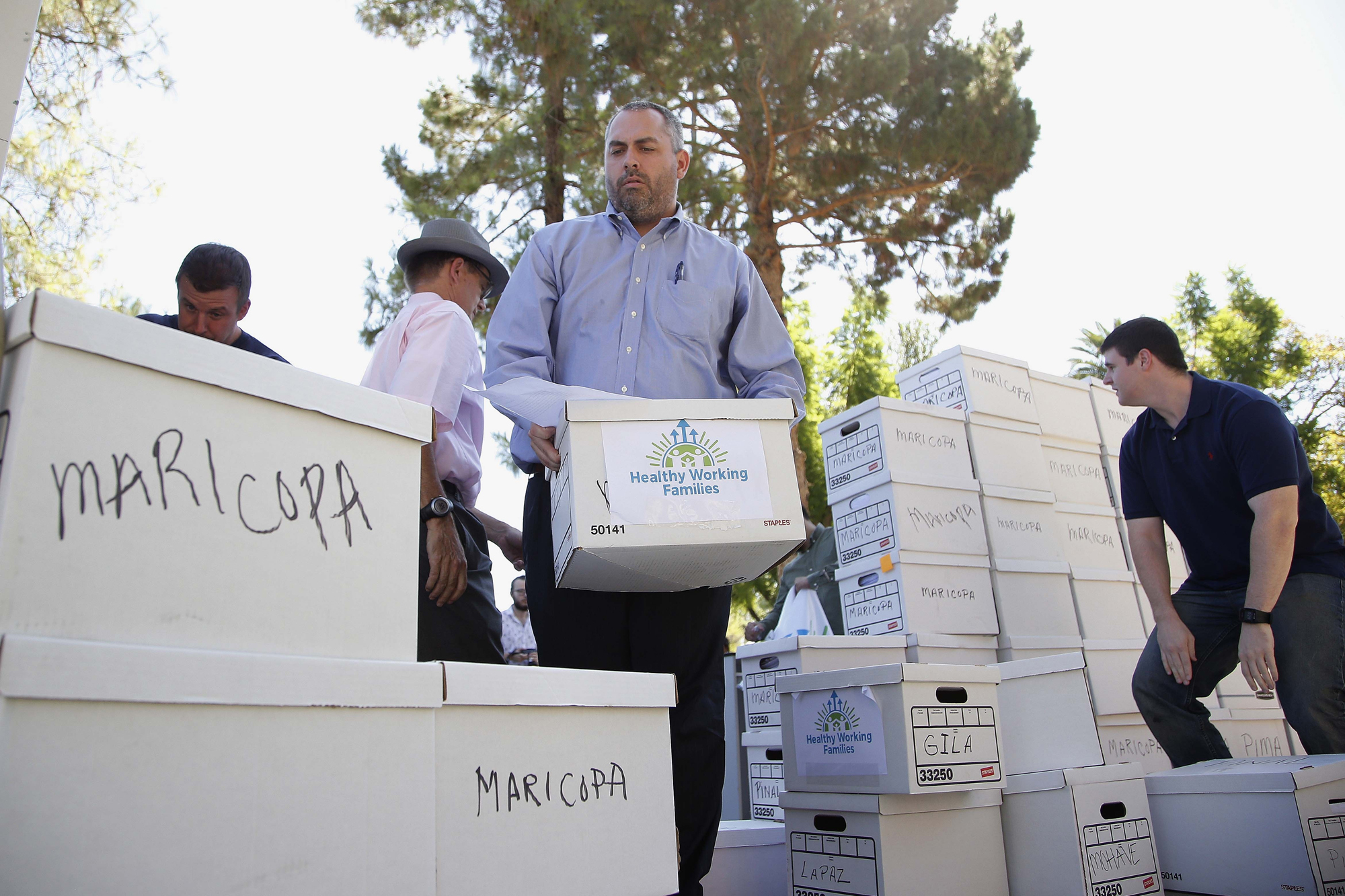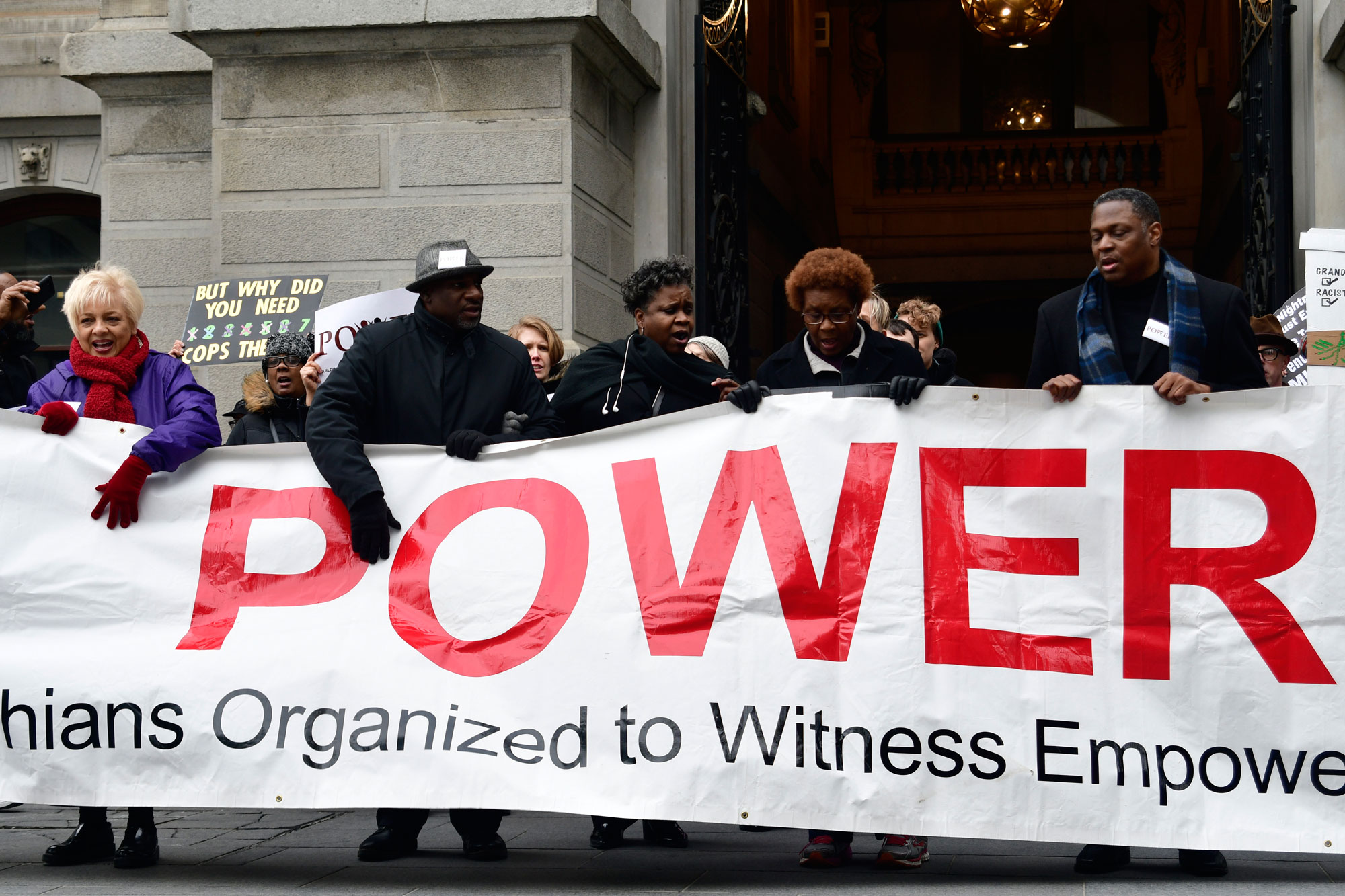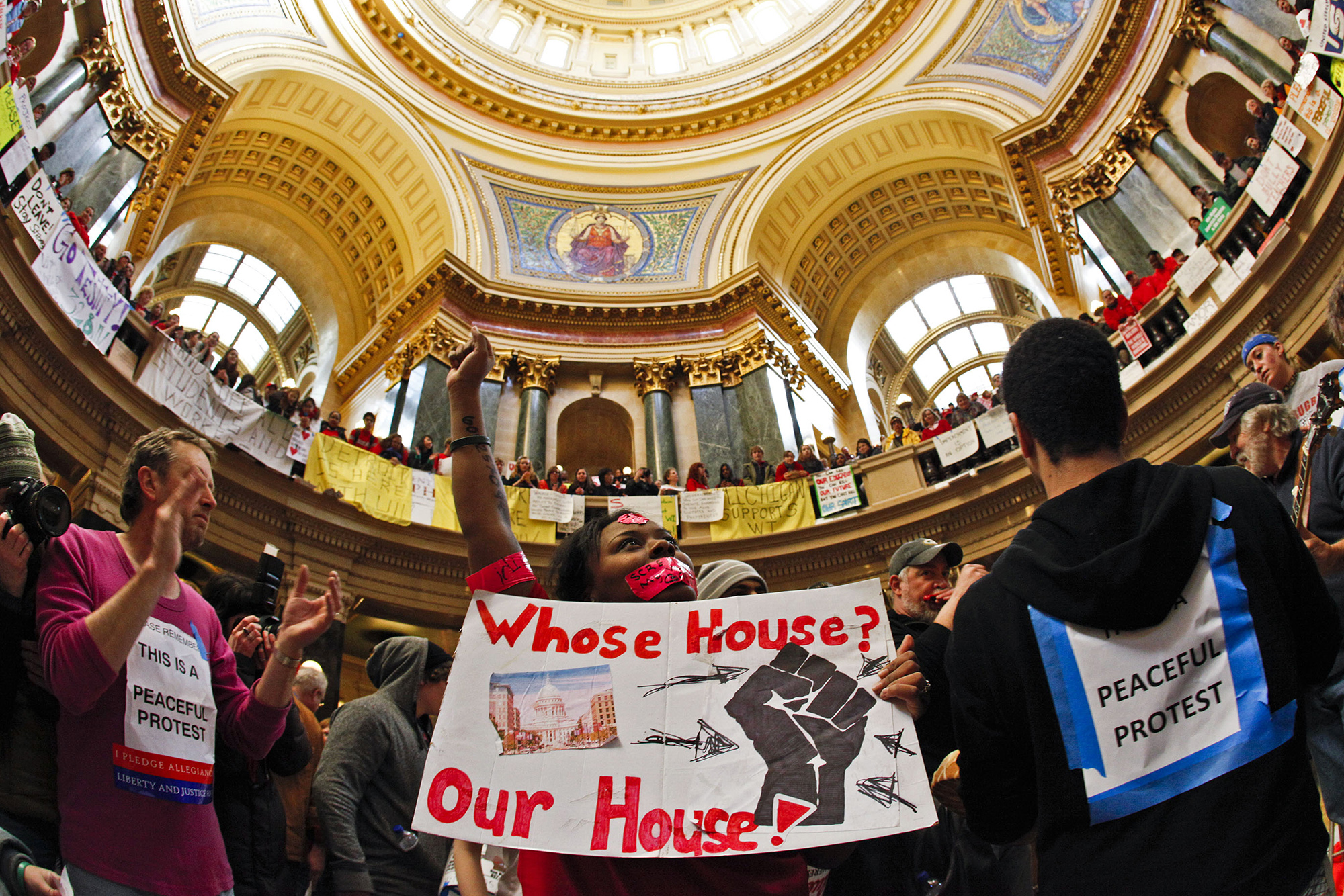On Wednesday afternoon in Tucson, on the eve of Arizona’s first ever statewide teacher walkout, every intersection along Broadway Boulevard became red.
For 20 miles, under a robin’s egg sky, teachers and public education supporters lined sidewalks and curbsides, parking lots and strip malls. They formed small seas of red shirts, hats, and beach umbrellas, and waved signs proclaiming “#RedForEd” and “Arizona education deserves more.” A school social worker walked along the road, wearing a full-body sign: “Best practice is 1 social worker to 250 students. I serve 942.”
One woman held a sign that read: “Arizona exports cotton, copper, and teachers,” a reference to the fact that teachers are leaving the state in droves.
Get TalkPoverty In Your Inbox
I traveled the entire route with my sons—20 miles to the east side where cheering teachers stood backdropped by the Rincon Mountains, and then 20 miles to downtown where teachers waved signs from overpasses and chanted through bullhorns. My sons—who, at ages 3 and 6, believe that teachers are superheroes—drank milkshakes in the backseat, watching the red unfold intersection after intersection, and cheered them on.
But Wednesday’s demonstration was just the beginning. On Thursday morning, tens of thousands of teachers across Arizona walked out of their classrooms. More than 110 school districts closed, affecting up to 840,000 students.
* * *
Resentment among Arizona educators has been simmering for years, caused by repeated budget cuts, the misuse of sales tax monies intended for public education (as confirmed by an Arizona Supreme Court ruling in 2010), and related lengthy lawsuits between the state and its public schools seeking back payments. During the Recession, the Arizona state legislature cut $1.5 million from public schools, more than any other state, leaving Arizona schools more than $1 billion short of 2008 funding.
Arizona currently ranks 49th in the country for high school teacher pay and 50th for elementary school teacher pay. When adjusted for inflation, teacher wages have declined more than 10 percent since 2001. Per-student spending in Arizona amounts to $7,205, compared with the national average of $11,392. There are currently 3,400 classrooms in Arizona without trained or certified teachers, and the state has over 2,000 teacher vacancies.
Inspired by grassroots teachers movements in West Virginia, Kentucky, and Oklahoma, Arizona teachers are using their collective power to demand change. A newly mobilized coalition, Arizona Educators United, has partnered with the state’s teachers union, the Arizona Education Association, to organize and coordinate demands. Teachers have held organizing meetings and “walk-ins” over the past few weeks, gathering together before school hours in protest of low pay for teachers and support staff—many of whom rely on second or third jobs just to get by—as well as insufficient classroom materials and per-student spending well below the national average.
Teachers in Arizona are reporting leaky roofs, 25-year-old textbooks, rats in classrooms, and schools unable to afford toilet paper. That’s not right. We have to stand with them as they organize for more resources. #RedForEd
— Kamala Harris (@KamalaHarris) April 22, 2018
Last week, when the Arizona Education Association held a statewide vote, 78 percent of the 57,000 Arizona educators who voted supported walking out. The teachers’ demands include a 20 percent pay increase; a permanent salary structure with annual raises; education funding restored to 2008 levels; competitive pay for support staff; and “no new tax cuts until per-pupil funding reaches the national average.”
In response to the demands, Governor Doug Ducey (R) offered teachers a 20 percent pay raise by 2020. But teachers are wary of Ducey’s plan, saying he hasn’t released details about how it would be paid for. The plan also doesn’t include raising wages for support staff, whom teachers say play critical roles in serving students.
While 74 percent of registered Arizona voters say the state spends too little on K-12 education, not everyone supports the teacher walkout. State Superintendent of Public Instruction Diane Douglas threatened consequences for teachers participating in the action. “A walkout is a nice term for it. It is a strike, plain and simple,” Douglas said in an interview this week, referring to a 1971 opinion from the Arizona attorney general, which said that public employees could not legally strike. Douglas suggested that teachers could be investigated, referred to the Board of Education, or even stripped of their teaching certificate.
State Rep. Kelly Townsend (R) made headlines after she responded to an email from a constituent who asked that she and other legislators find a way to fund education and avoid a walkout. Townsend, who serves as Majority Whip, responded:
I’m sure we can take it from the correctional officers pay who make minimum wage in some cases, release some of the prison population, take it from the developmentally disabled and close adult homes from the disabled, freeze Alzheimer’s research, take it from Veteran’s services, dental services for the underserved, desperately needed road funds, the university funding, and put another freeze on Kids Care health insurance.
She has since become increasingly verbal in opposition to the walkout, even threatening a class action lawsuit.
But amid the backlash, many community groups have mobilized to support the teachers, including nonprofit organizations, youth centers, and churches offering free or low-cost camps and daycares for working parents in need of childcare during the walkout. And on Thursday, more than 50,000 teachers and supporters converged at the state capital in Phoenix.
* * *
Yesterday morning in Tucson, I found hundreds of teachers, parents, and students demonstrating peacefully and passionately in front of the courthouse. Parents lifted toddlers onto their shoulders to wave at passing cars. A family spread out a picnic on a blanket in the shade. When a semi-truck drove by, honking in support, the crowd erupted into cheers. Some demonstrators planned to later join the masses in Phoenix; I overheard a lighthearted joke about the streams of teachers in their station wagons, obeying the speed limit all the way to the rally.
High school teacher Jeff Mann brought his two children to the Tucson rally. “It’s a chance for our kids to see what civic engagement is and how you fight for what matters—have your feet match your mouth,” he said. “It’s unfortunate that these are the steps we have to take, but we haven’t been given many choices. My hope is that I’m back teaching tomorrow, that the legislature comes to their senses, and that education is funded.”
A group of students from Tucson’s IDEA School stood together on a corner with their teacher, chanting and waving homemade signs. One 10-year-old in the group told me, “We’re not a public school, but we’re helping support all the public schools, because we want all the teachers to have more money and the kids to have more materials.”
On the same corner, seventh-grader Salome Arrieta and her mother Victoria stood together, holding #RedForEd signs. Salome said that despite her middle school receiving the prestigious A+ School of Excellence Award from the Arizona Education Foundation, there’s still a glaring lack of resources. “Whenever I go to my school and try to use the bathroom, there’s no toilet paper, there’s no soap, and our textbooks are like 15 years old,” she said.
Salome’s mother, Victoria, an elementary school special education teacher, said she walked out to support the kids. “Everyone needs a raise. Not just the teachers. When you’re a special education teacher, the support staff is an integral part of your job, and they need to be paid more, too.”
Across the street, second-grade teacher Sonya Rosales told me, “My kids are sitting on carpet from like 1976. Any activities that we do, whether it’s for Mother’s Day or Valentine’s Day, it comes out of our own pockets. We get 10 reams of paper per quarter, and once it’s out, that’s it.” She said learning materials are so outdated that she’s forced to make her own worksheets. “I make everything myself on my computer. I go to the Common Core standards, and every worksheet I make myself. I work two extra hours a day, unpaid.”
A teacher named Roberta who preferred not to give her last name said she’s been teaching for 35 years and spent more than $1,000 of her own money on materials for her classroom last year. “I do the very best that I can,” she said, “If it means me spending money out of my pocket, I do that because I’m a teacher and I care about my students, and I care about seeing my students walk across that stage.”
As she spoke, her eyes filled with tears. “I’m doing this for my students. I’m a Republican, but it doesn’t matter whether you’re a Republican or a Democrat. It’s about our students.”











